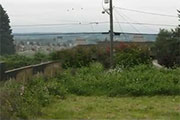
FRIDAY, Aug. 10 (HealthDay News) — Planting grass and trees and removing debris from vacant lots not only makes nearby residents feel safer, but this “greening” could also help prevent violent crime, according to a new study.
“Vacant lot greening changes the physical environment of a neighborhood from one that may promote crime and fear to one that may reduce crime and make people feel safer,” said the study’s lead author, Dr. Eugenia Garvin, a resident in the department of emergency medicine at the University of Pennsylvania Perelman School of Medicine, in a university news release.
“Our theory is that transforming vacant lots from a space overgrown with vegetation and filled with trash to a clean and green space may make it difficult for people to hide illegal guns and conduct other illegal activities such as drug use in or near the space,” Garvin said. “Additionally, green space may encourage community cohesion.”
In conducting the study, published online Aug. 7 in Injury Prevention, the researchers randomly selected two groups of vacant lots. In the first group of lots, the researchers planted grass and trees and removed debris. They also built fences and maintained the lots every two weeks. In the second group of lots, no greening was done.
The researchers then interviewed 21 people living near both sites before and after the greening. The study found that after three months, the people living near the lots that were maintained felt much safer than those living near the vacant lots that were not greened.
After analyzing police reports of crimes in the vicinity of the lots three months before and three months after the greening efforts, the researchers found total crime, including assaults with and without a gun, declined following the greening.
“Philadelphia LandCare has helped transform thousands of vacant lots in key neighborhoods across the city,” said Bob Grossmann, director of the Pennsylvania Horticultural Society’s vacant land program, in the news release. “We know that these improvements help neighborhoods and residents in a number of ways, but studies like the one led by Dr. Garvin help us to determine very specifically how we’re impacting the city so we can continue to drive change where it’s needed most and in the way that will have the most positive effects.”
A much larger trial, examining hundreds of vacant lots, is now under way that should provide urban planners with more information on greening as a safety strategy, the researchers said.
More information
The Center for Community Progress and the Philadelphia City Parks Association provides more information on vacant lot rehabilitation.

